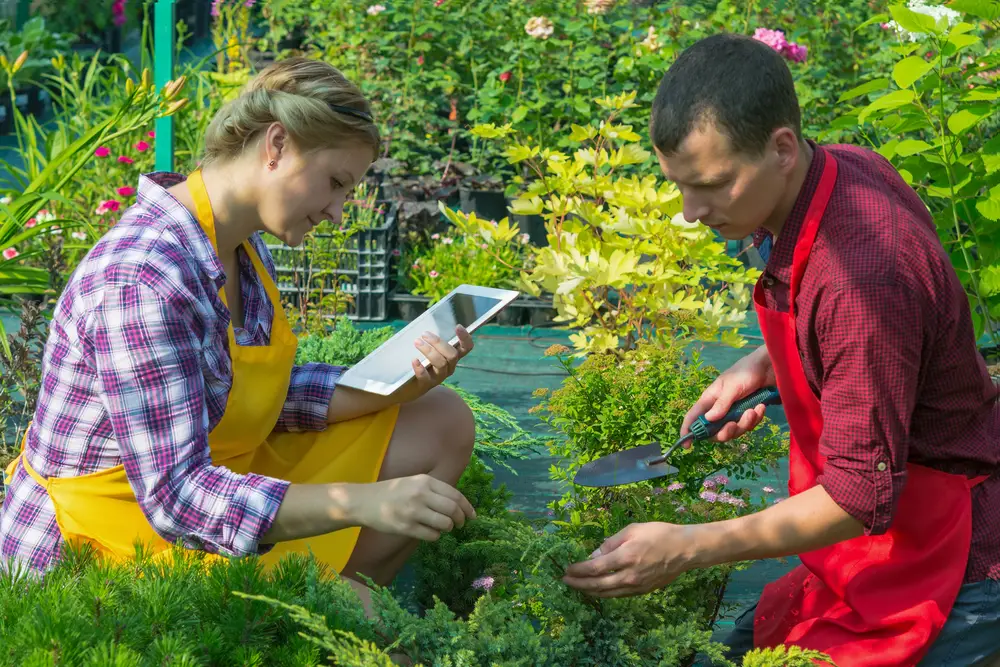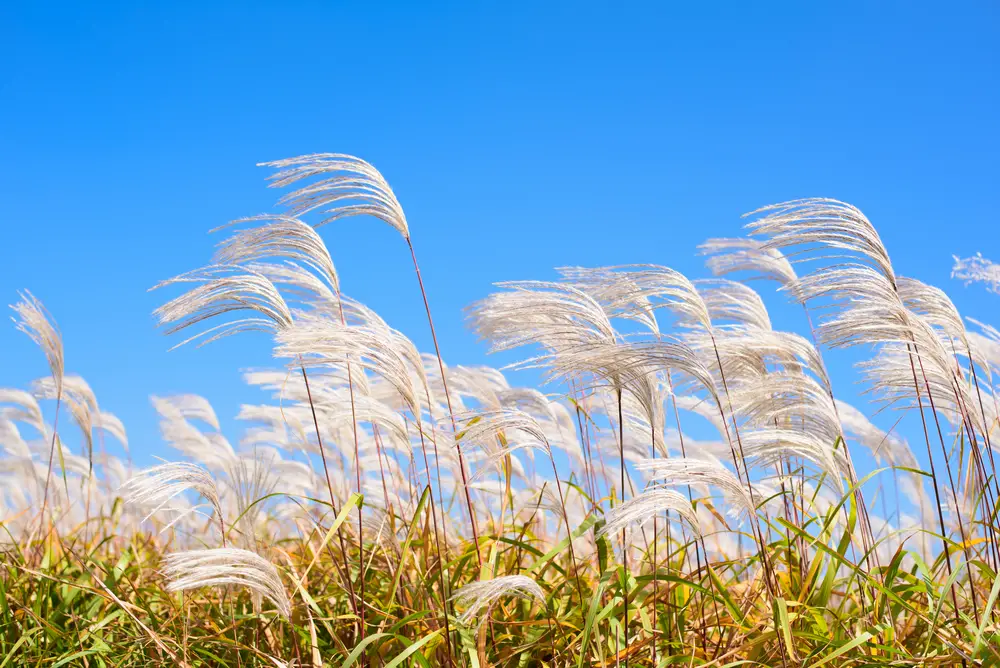Have you ever wondered: “What are microclimates?” Well, microclimates are smaller areas where conditions deviate from the broader area.
They occur due to the relationship between elements in a landscape, such as:
- The amount of light your growing spaces receive
- Your property’s slope
- The buildings and trees present
- Materials used to make those buildings
- The buildings’ orientation
- Water
- Wind
Microclimates can impact temperature, light, shade, air circulation, and even how much water your ground holds.
Microclimates can be large areas within broader climate zones (or macroclimates). They can also be pockets of space in your yard.
In fact, you may have already experienced a microclimate!
For example, have you ever gardened in a city or currently do? If you have or are, then you know your garden is routinely a few degrees warmer than those even just outside the city.
Areas outside a city have significantly more green space. Cities use building materials such as asphalt, concrete, brick, and stone. Those materials absorb and release more heat than less densely developed or undeveloped areas.
This is one example of a microclimate.
Now, microclimates wouldn’t be such an issue if information about them was more readily available. Unfortunately, it’s not.
For example, you likely already know your hardiness zone, which gives you broad growing information. You probably already have at least some understanding of what weather to expect throughout various seasons in your area.
But you might find it a bit harder to find information about how a microclimate shows up in your yard and garden.
This is what we’re going to help you with.
Learning what microclimates are will help you become a better gardener and help your garden be more successful.
Let’s start with understanding and identifying your microclimate.
How To Understand And Identify Your Microclimate

As a long-time gardener, I first suggest observing what’s already happening in your yard before making any changes to your garden inside.
Sure, your yard may look simple and like not much is going on. But any plant growth happens only due to a whole system feeding into that growth.
This system includes elements such as the amount of light coming in, your property’s slope, and any buildings or trees present.
Observing the relationship between these elements and your plants will give you clues about what nature is already doing in your yard. It’ll also give you an idea of how to work with and harness its power to maximize growth.
It may even save you some work in the long run!
So, it’s worth mentioning again, but the aspects you’ll want to pay attention to are the following:
- Sunlight (and shade)
- Trees
- Water
- Wind
- Materials
- Fixed Structures
As you assess and survey each of these aspects of your property, keep in mind whatever you experience, so will your plants.
So, anything you observe will allow you to make the most informed choices when growing your garden.
Let’s start with light.
Light

I can never emphasize the importance of sunlight in a garden enough. It affects temperature, a plant’s capacity to photosynthesize, and even the presence of water.
Since sunlight is essential to your garden, you must understand its presence with certainty.
The good news is you can complete a sun and shade survey in a day. This survey goes a long way toward helping you understand how light and shade work in your yard and garden.
I suggest doing this exercise even if you think you already know this information. I know I came across a few surprises in my yard.
Choose a few vantage points to observe and document what you find so you can refer back when planning commences.
Look at the light throughout the day and how it changes from hour to hour. Note where and when there is light and shadow and which season you are doing this.
A survey of light in your yard will show you where you’ll get the most sun (and likely the most heat) and the most shade (and protection from heat).
This should begin to form the basis of which plants you’ll grow in each location.
Trees

Trees are undoubtedly important in any landscape. They provide a habitat for many animals, filter the air, root deeply into the ground, and, depending on their size, provide shade and some shelter from precipitation and wind.
Their importance also means they have a significant effect on your microclimate.
So, if you have trees on your property, you’ll want to observe how they interact with the rest of the aspects of your yard.
Note where and when they shade, assess how much precipitation they allow through their canopy, if they block strong winds, and if anything is growing underneath them.
You likely already captured the light and shade around your trees in your sun and shade survey, but it doesn’t hurt to do it again here.
To assess wind and precipitation concerning your trees, you may want to go outside when it is windy or rainy and see if the wind moves differently and if it is wetter or drier on any side or underneath the tree(s).
Precipitation

Your garden’s success depends on getting the right amount of water. Not enough or too much can cause problems.
Moreover, many factors can affect water’s movement on your property, such as the following:
- Land grade or slope
- Soil texture
- Buildings
- The presence of trees or shrubs
As the co-manager of the ecosystem your garden is located in (nature is the other), it is your job to assess the water needs and decide if you need to make any changes to improve the situation.
You can do this by going outside after a significant rainfall.
Observe how different areas of your yard respond.
Note any areas that are still dry and those where water has pooled.
Dig into your soil and see if it has absorbed the water or if it has run off.
Each indicator gives clues about how water moves through your property and what you can do to improve it if needed.
Some examples of improvements you may need to make include the following:
- Releveling low spots
- Creating better drainage
- Improving soil quality
- Adding mulch for better water retention
The important thing is you won’t know until you observe what’s happening.
If you have the time and flexibility, it can be particularly helpful to watch what happens to precipitation in your yard in early spring, just as your growing season begins.
If you live where snowfall accumulates, watch where it melts soonest and last.
Make note if these are the same areas that green up and start growing first. If so, you have identified the warmest areas on your property.
Make note of the coolest areas as well.
All of this information will help you plan and situate your plants in the conditions they will thrive in.
Wind

Move around your property when it’s windy and identify sheltered areas or those that accelerate the wind.
Check and note conditions on all sides of buildings, any fixed structures, and trees.
Also, note what direction the wind is coming from.
Prevailing winds often change with the season, so you may want to survey the wind repeatedly in different seasons.
Watching how leaves, rain, or snow move through your yard can give clues about how the air moves and whether it is circulating well or stagnant.
Does the wind move directly through your yard? Does it swirl in any spots? Do leaves, snow, or rain accumulate more in some places than others?
This information is pertinent because it shows you where your plants have more protection or exposure.
A windier yard means your plants may need more water.
However, a windier yard is also a great spot to plant a variety that’s susceptible to fungal disease or a fragrant plant you’d like to enjoy.
Depending on how the air moves through your property, your plants may need more physical support, or the temperature in certain spots may be a few degrees cooler.
You can see why you need to survey how the wind moves in relation to your garden.
Materials

As you assess the materials used throughout your property, take in all standing water and stone elements, wooden, concrete, and all human-made structures. Each of these affects how the broader climate plays out in your growing space.
Each of these materials absorbs and releases heat differently.
It takes time for brick, concrete, and stone to absorb heat. However, they can provide a good amount of radiant heat once they do. Fences or sheds can double as windbreaks.
Color also plays a role. Dark colors absorb heat more readily, and lighter colors reflect it.
Natural materials absorb water and allow drainage of excess water, whereas artificial pathways likely won’t.
Fixed Structures

To build a complete picture of microclimates on your property, you’ll have to consider the fixed structures. This includes your house, garage, pergolas, sheds, fences, and pools (essentially, anything immovable).
These elements cast shadows, can prevent moisture in certain spaces, can create wind tunnels, and more. Your job is to figure out how they affect the whole space and factor the information into building your best garden.
On a cool day, walk around and see if you can find any spots that feel warmer than others.
Putting It All Together
As you learn how microclimates and different parts of your yard respond to different climatic inputs (rain, wind, sun, etc.), you put yourself in a position to create a tailor-made plan for your garden.
Then, you can follow through on it to create a functional and relatively easy-to-maintain garden that will thrive more each year.
Reasons To Enhance (Or Develop) Your Microclimate
Simply put, we work with microclimates to harness the power of nature in our gardens. The more we can work in alignment with what nature is already doing in pursuit of this goal, the more everything becomes easier.
This kind of integrated (or systems) approach can also be applied when we are looking to solve specific problems.
If you live in a dry area with poor soil, for example, you will want to build the soil with lots of organic materials so it can absorb and hold rainfall. You may want to create an area to hold water.
If you live in a humid environment where moisture is sometimes too abundant, you will want to find solutions to promote good drainage and healthy airflow to keep rot and disease at bay.
Whatever goal you are trying to reach with your garden, there are several ways to achieve it.
The primary components you may want to alter through your design are:
- Light or shade
- Temperature (heating or cooling)
- Water management (wetter or drier)
- Waste management/distribution of nutrients
- Air circulation (more or less exposure/protection)
When Adjusting Or Developing Microclimates Can Become a Problem
Introducing elements to your landscape that don’t take the current ecosystem into consideration can cause issues.
You may increase the presence of pests and diseases, for example.
Ultimately, you may inadvertently create an environment that limits or prevents the very growth you’re seeking to encourage.
At the very least, you’re creating an environment that’s out of balance with itself.
While the ecosystem will adapt with enough time in most situations, you shouldn’t keep putting it in a position to.
The best thing you can do is learn as much as you can in advance to prevent these issues from arising. You can also learn to “read” what’s happening and respond to your property’s needs as quickly as possible.
This will make you and your property better.

